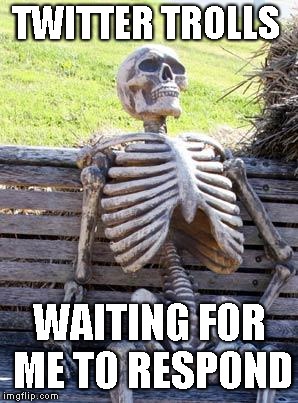Like many people I have a Twitter
account that I use for work purposes. I generally tweet about what I’m up to at
work, what stories and projects I’m working on and just general gubbins about my
working life in the press office at the University of Bedfordshire.
I’m not a Twitter by any means – most of what I know I've learnt on the job and through trial and error. But if you’re thinking about setting up your own Twitter account for work and are not sure where to start, here are a few tips to get you going:
I’m not a Twitter by any means – most of what I know I've learnt on the job and through trial and error. But if you’re thinking about setting up your own Twitter account for work and are not sure where to start, here are a few tips to get you going:
Think before you post
Let’s start at the beginning.
Before you post anything, ask yourself this question – would I want my mum to see this? Or, more importantly, my boss? If the answer is no, it might be
better not to post it
Ask yourself what you want out of Twitter
I post the occasional photo of my
dog, because who wouldn’t want to see this gorgeous face(by the way that’s
Bowen, he’s a six-year-old GSD cross and the love of my life).
After a mental Monday, a cuddle with this beautiful boy is just what I need ❤️ pic.twitter.com/F0IgtlqBrA— Caroline Jacobi (@CJacobi16) January 8, 2018
Saying that, I rarely mention
anything outside my working life. It’s worth thinking about what you want to
get out of using Twitter in a professional capacity.
Do you want to link up with
journalists? Or connect with fellow PR professionals. Most of these people will
be interested in news about your organisation, but not so interested in photos
of your boozy night outs. It might be an idea to have two accounts, one for
work, one for outside work, just so there’s no cross-over.
Use it or lose it
I see so many accounts that
are never used. My heart sinks when I see an account for a department
in the University, and then I see that nothing has gone out from it since 2015.
They just sit in cyberspace looking empty and sad. Get into the habit of
tweeting at least once a day.
Don’t be afraid of images and tag, tag away!
Not only do photos increase
engagement by up to 300%, they have a nifty function where you can tag other
accounts into your tweet, rather than using up your precious word count with
Twitter handles. Tagging also increases engagement and will help you get
noticed. Hashtags have the same effect, though too many can be a bit much - two
of three is a good number.
Ignore the trolls
Ignore the trolls
Tempting as it is to get into a
Twitter row with an idiot with too much time on their hands – don’t do it. Trolls
thrive on attention and you just end up stoking the fire if you engage with
them.
A wise person once said (probably
on a social media platform somewhere): “Arguing with a Twitter troll is like playing
chess with a pigeon. No matter how good you are at chess, the pigeon is just
going to knock over the pieces, crap on the board and strut around like it’s won.”
Just ignore it, and if it gets really nasty, block them and report them to Twitter and let them deal with it.
If you’re interested, my Twitter handle
is @CJacobi16 – feel free to pop
over and have a look.







I twit a bit too. Thinking before you tweet does seem very important; I've not read this book, but as I understand it, it covers off the perils of sending out glib tweets which can come back to bit you in the proverbial hash tags....
ReplyDeletehttps://www.theguardian.com/books/2015/mar/15/publicly-shamed-jon-ronson-is-shame-necessary-jennifer-jacquet-review-think-before-you-tweet
Very good points! My Twitter is (thankfully) a personal one, so I get to tweet about unicorns as often as I like, hazzah!
ReplyDeleteGreat blog, Caroline! I didn't know about the image tags.
ReplyDeleteWhen it comes to Twitter automation the first tool that strikes in my mind is WizUgo com. I have used various tools and websites to automate my Twitter account, but no marketing tool can compete with the results that I got with Wizugo. All thanks to Wizugo. It made my all day work easily as now I don’t need to pay most of my time on Twitter because Wizugo has got my back now.
ReplyDelete